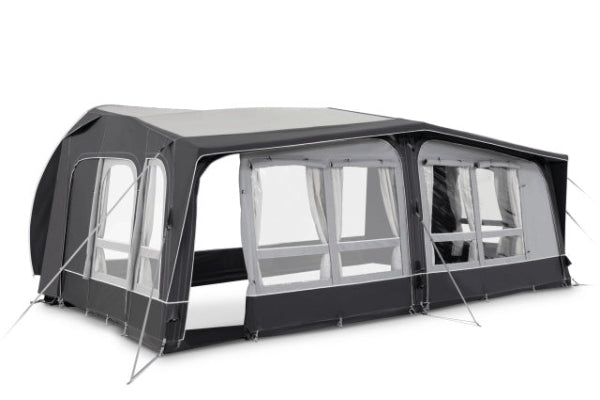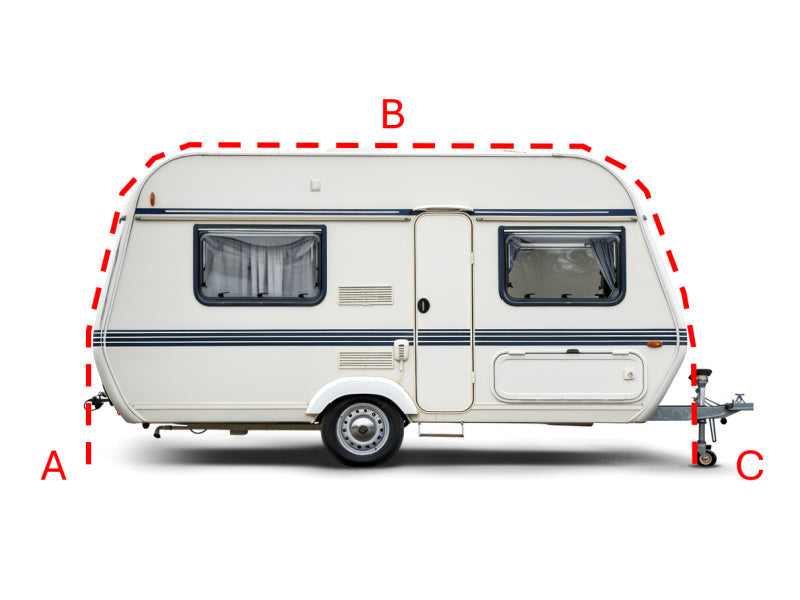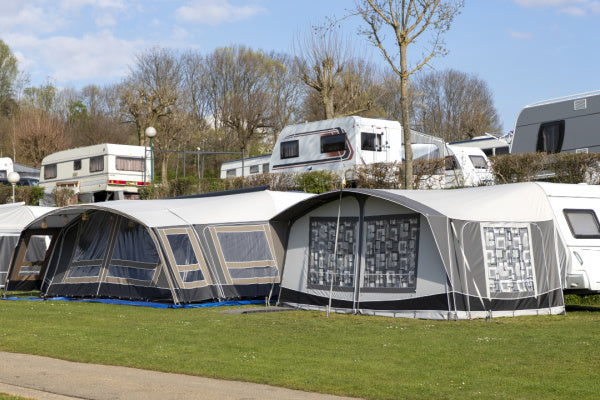When Should I Take My Caravan Awning Down?
Ah, the eternal camping conundrum: when to bid farewell to your caravan awnings for the season? The short answer: take them down before winter and during severe weather. But there's more to keeping these canvas companions happy than just timing – read on for essential tips that'll save you headaches (and possibly your awning).
Knowing When to Retract Your Awning
Caravan awnings transform cramped spaces into cosy retreats. They shield from sun and rain, creating perfect spots for morning coffee or evening drinks. Yet these beloved additions need proper care and timely storage to avoid costly damage.

Getting the timing right means watching several factors. Weather plays the starring role, but site departures and seasonal changes deserve attention too. Making smart choices about when to pack away the awning can save both money and hassle down the road.
Weather Conditions
Mother Nature holds the cards when it comes to awning safety. Different weather patterns bring unique challenges, and knowing how to respond keeps both awning and caravan secure.
High Winds
Nothing strikes fear into a caravanner's heart quite like rising winds. These invisible forces pose serious risks to awnings and their attachments.
Take down awnings when wind speeds climb past 20mph. That might sound overcautious, but prevention beats trying to wrangle a thrashing awning in gale-force conditions.
Exposed camping spots need extra attention. Coastal sites or hilltop pitches often catch stronger gusts than forecasts suggest. Watch local weather patterns and chat with site wardens about typical wind conditions.
Smart caravanners keep weather apps handy and check forecasts regularly. Better to spend fifteen minutes taking down an awning than face hours of repairs later.
Heavy Rain
Rain alone rarely threatens a well-maintained awning. But combine it with other weather factors, and problems start brewing.
Watch for these warning signs:
-
Water pooling on the awning surface
-
Sagging sections that collect rainfall
-
Forecast of sustained downpours
-
Strong winds alongside rain
Regular checks during rainy spells help spot potential issues. Brush off accumulated water before it strains the fabric and frame.
Modern awnings boast impressive water resistance. Yet extended exposure to heavy rain can still lead to leaks and damage. When in doubt, taking down the awning beats risking water damage to both the awning and your caravan.

Snow
Snow might look pretty, but it spells trouble for caravan awnings. Even a light dusting can quickly become a heavy burden.
Never let snow gather on an erected awning. The weight distribution causes unexpected strain on poles and fixings. What starts as a gentle snowfall can turn into a structure-crushing load overnight.
Cold weather brings its own challenges too. Fabric becomes less flexible, making removal trickier. Metal components get brittle and more prone to damage.
The golden rule with snow: if it's in the forecast, the awning comes down. No exceptions, no delays, no risks.
Thunderstorms
Thunderstorms pack multiple punches. Lightning, wind, and torrential rain create a perfect storm of awning hazards.
Summer storms often brew quickly. Keep an eye on darkening skies and listen for weather alerts. That rumble in the distance means it's time to start taking down the awning.
Don't wait until the first drops fall. Racing against an approaching storm makes the job harder and more dangerous. Plan ahead and work methodically for safe removal.
Leaving the Site
Stepping away from the caravan? That's another key moment for awning decisions.
Short trips to local attractions might not need awning removal. But anything longer than 24 hours calls for careful thought. Weather can change dramatically during a day trip or overnight stay elsewhere.
Site wardens can't monitor every awning during bad weather. They shouldn't need to - it's each caravanner's responsibility to secure their own equipment.
Consider these factors before leaving:
-
Length of absence
-
Weather forecasts
-
Season and typical weather patterns
-
Site location and exposure
-
Local climate quirks

Long Periods of Disuse
Extended storage needs careful planning. Proper preparation keeps awnings ready for next season's adventures.
Start with thorough cleaning. Remove dirt, leaf litter, and any mould spots. Pay special attention to corners and crevices where debris collects.
Let everything dry completely before packing away. Damp fabric invites mould growth during storage. A sunny day makes perfect conditions for this final step.
Choose storage space wisely:
-
Dry environment
-
Good ventilation
-
Protection from extreme temperatures
-
Away from direct sunlight
-
Safe from pests
Regular maintenance extends awning life significantly. Check seams, zippers, and attachment points before storage. Small repairs now prevent bigger problems later.
Remember manufacturer guidelines for specific care instructions. Different materials need different treatment. Following these recommendations protects warranty coverage too.
The joy of caravanning comes partly from those moments under the awning. Watching sunset from your extended living space, staying dry during passing showers, sharing drinks with neighbouring campers - these memories make the hobby special.
Protecting your awning means protecting those future moments. Smart decisions about when to take it down keep both the equipment and your peace of mind intact. When nature throws its worst weather around, you'll thank yourself for making the right call at the right time.
Other content you might like:
- Caravan awning not rolling up straight
- Caravan awning not retracting
- Caravan awning not locking
- Caravan awning on hardstanding
- Caravan awning in high winds
- How to secure a caravan awning in high winds?
- How do you tie down a caravan awning?
- How to stop caravan awning flapping?
- Why do some campsites say no awnings?





Leave a comment